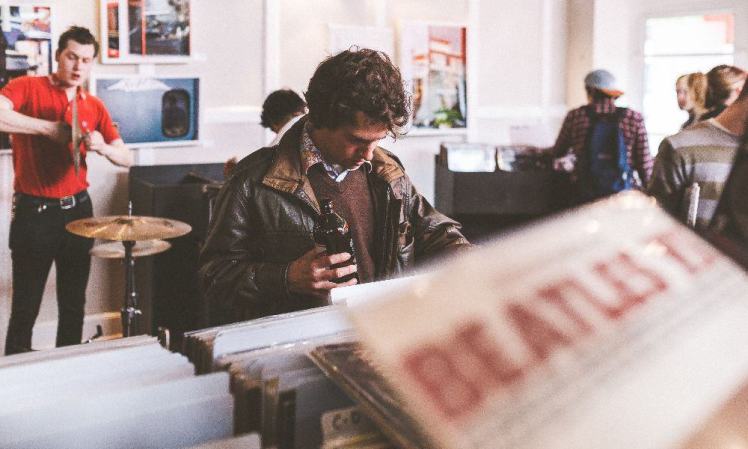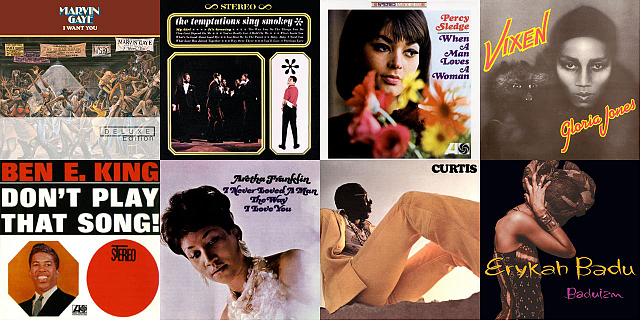Table of Contents
The 1950s were a decade in which the consequences of the Second World War were felt. Fortunately, one miracle after another occurred. First, the German economy was on the upswing, and then in 1954, the German national team became the world champion in Switzerland.
For many Germans, such events were a balm for the soul, especially given the uncertain future of the Cold War.
Musically, the 50s were an exciting time. Rock ‘n’ roll spilled over from the USA to Europe, and many young people gratefully embraced the new rebellious nature of the music. Musicians like Chuck Berry, Elvis Presley, Johnny Cash, Frank Sinatra, and Jerry Lee Lewis stormed the charts worldwide. They spread the attitude towards the life of a youth protest culture that had never existed before.
Elvis Presley was especially popular with the youth. With the help of many different live appearances on television and his unique rhythmic hip and leg movements, he started a national media furor of unimagined proportions. Quickly the whole country knew the legendary singer.
With an estimated sales of over one billion records, “Presley” is considered to be the most commercially successful solo artist worldwide – and it all started in the fifties.
Besides rock ‘n’ roll, the German Schlager is especially popular with the older audience. Illo Schieder, Peter Alexander, and Gitte Haenning provided their songs for a positive mood, still played today with pleasure in the Schlager world.
If you would like to go on a musical journey to the 50s, the following 104 songs are a good choice. In addition to party songs, our playlist also includes many love songs, boogie-woogie songs, and rock ‘n’ roll hits that perfectly reflect the music of the 1950s.
(At the end of the article, we have created a Spotify playlist for you with all the songs listed here.)
Listen to the best 50s hits
01. Hank Williams, Your Cheatin’ Heart (1953)
Soon after its release in January 1953, the song “Your Cheatin’ Heart” was hailed by the trade press as one of the best ’50s hits on the country music scene. Singer Hank Williams (1923 – 1953) had died before “Cheatin’ Heart” premiered.
The last big hit of the Country stars combined with his sobbing intonation, the dominating fiddle music, and the sad guitar riffs exemplary elements of a perfect Country song. In the song, Williams, quite uncharacteristically for a cowboy, lamented his ex’s “deceitful heart” in an unmanly and tearful manner.
02. Bill Haley & his Comets, Rock Around the Clock (1954)
For millions of young people of the 1950s, in Germany, “Rock Around the Clock” by the U.S. singer Bill Haley (1925 – 1981) became a musical revival experience. Haley, who grew up in the tradition of Western Country, had developed his rockabilly-like style by the late 1940s. In 1953, Haley & his Comets had their first hit with this new style of popular music, called “Northern Band,” to distinguish it from Southern rockabilly: “Crazy Man Crazy.”
The following year, “Rock Around the Clock” was released and unnoticed. The worldwide breakthrough came in 1955 as the accompanying music for the U.S. film “Blackboard Jungle” (“Seed of Violence”), which dealt with youth violence. Sales figures were enormous: in 1955, more than five million singles were reportedly sold; in the following years, twenty million more. Crafty film executives promptly produced the Music film “Rock Around the Clock” (“Außer Rand und Band”), which was about rock’n’roll and (the starring) Bill Haley.
The film, which premiered in 1956, suddenly made rock a global phenomenon. It became an outlet for many young people who felt trapped in the dull Adenauer and Eisenhower worlds of bourgeois post-war societies. “Rock Around the Clock” stood at the beginning of autonomous youth cultures.
03. The Chords/The Crew cuts, Sh-Boom (1954)
The 1950s were the core decade of the doo-wop era. Doo-wop” was the name given to a U.S. pop and rock vocal arrangement for which, among other things, the contrast of bass and falsetto vocal parts was typical. One of the countless doo-wop formations was The Chords, who in 1954 with “Sh-Boom” had their One-hit wonder experience.
In the love vow lyrics, the slang word “(Sh-)Boom”, which was in vogue in 1954, appeared dozens of times. In the same year, the Canadian group The Crew-Cuts released a similarly successful, Big Band-like smoothed version.
04. Little Richard, Tutti Frutti (1955)
The ’50s song “Tutti Frutti” made it into the top 100 of Rolling Stone Magazine’s perennial list of the best pieces of all time. The U.S. rocker Little Richard (real name: Richard Wayne Penniman, b. 1932) created “Tutti Frutti,” which begins with the onomatopoeic line “A wop bop a loom op a womp bam bomp,” a leg-pounding classic of the 1950s’ fledgling Rock music.
The ambiguous lyrics also contributed to the worldwide success of “Tutti Frutti.” The girl Sue, the subject of the lyrics, presumably took the good right to choose alternate partners for fun and sex.
05. Jerry Lee Lewis, Whole Lotta Shakin’ Goin’ On (1955)
The U.S. rocker Jerry Lee Lewis (b. 1935) stood in the 1950s for a strongly emotionalizing way of conveying the new music genre rock’n’roll by emphasizing aggressiveness.
His “Whole Lotta Shakin’ Goin’ On,” which exemplifies this style, was a variation of the R&B singer Big Maybelle (1924 – 1972). With passages like “Baby, we got the bull by the horn,” this rock song is one of the most lyrically raunchy 50s hits and became Lewis’ first megaseller (six million singles sold).
06. The Platters, Only You (1955)
In the 1956 premiere of the music film “Rock Around the Clock,” the U.S. group “The Platters” also appeared. The doo-wop formation around lead singer Tony Williams (1928 – 1992) shone in the strip u. a. with the very soulful hit “Only You (And You Alone)” produced in 1955, of which two million singles were sold.
In 1955, “Only You” occupied the top spot on the R&B charts in the U.S. for seven weeks.
07. Doris Day, Que Sera, Sera (1956)
In a scene from the Hitchcock thriller “The Man, Wo Knew Too Much” (1956), the doctor’s wife Jo McKenna warbled the cheerfully optimistic song “Que Sera, Sera” to her young son Hank. It was about the children’s question about the future.
The McKenna family, including dad Ben (James Stewart), was vacationing in Morocco. No one suspected the horror that awaited the McKennas in the next few movie meters. The leading actress Doris Day (real name: Doris Kappelhoff, b. 1922) was already famous since the late 1940s as a movie star and a tearjerker.
Their “Que Sera, Sera (Whatever Will Be, Will Be)” had been cleverly incorporated into the film by Hitchcock as a harmless bourgeois relaxation element. However, in retrospect, the song line “The future’s not ours to see” may have referred to future horrors (murder, kidnapping). In 1956, the song was prominently featured in the hit parades of the U.S., Great Britain, and Germany for weeks on end.
And the Oscar nomination for “Best Song” followed the next year.
08. Johnny Cash, I Walk the Line (1956)
With “I Walk the Line,” U.S. country star Johnny Cash (1932 – 2003) scored the first of his thirteen № 1 hits.1-hits in the U.S. country charts. The 50s song that became a megaseller was a declaration of love by Cash to his wife.
In the lyrics Cash promised to always stay on the straight and narrow; that should mean: not to cheat.
09. Chuck Berry, Roll Over Beethoven (1956)
The megaseller “Roll Over Beethoven” was the joking request of the U.S. rock singer Chuck Berry (1926 – 2017) to Beethoven to withdraw from the musical world of young people in favor of rock’n’roll to take Tchaikovsky along with him. The rocking “Roll Over Beethoven” became one of the most popular songs of that year’s most covered songs of music history.
10. Carl Perkins, Blue Suede Shoes (1956)
One of the founding fathers of rock’n’roll, US singer Carl Perkins (1932 – 1998), released a song in 1956 that for once was not about love lived or spurned between people. Instead, the extravagant subject was enthusiasm for “Blue Suede Shoes” that bordered on fetishism.
The first-person narrator could bear the idea of being kicked, beaten, or robbed, but in no case would he allow his idolized blue suede shoes to be touched. Hence his rock-ribbed appeal to all: “Stay off my blue suede shoes!” Although Elvis Presley also released a version of “Blue Suede Shoes” in the same year, the shoe song became Perkins’ biggest hit, selling about a million singles.
11. Pat Boone, Love Letters in the Sand (1957)
Already in 1931, US singers like Gene Austin and Lee Morse had success with the sentimental song “Love Letters in the Sand”. However, the song only became a world hit in 1957 with its successful version as a moderately rocked tearjerker.
The performer of this version, which was one of the top hits of the 1950s, was the American Pat Boone (real name: Charles Eugene Boone, b. 1934). Boone had specialized in pop ballads.
With this, he had become one of the biggest teenie-boppers in the 1950s. Boone’s “Love Letters” spanned the arc from love words written in the sand and then leveled by the tide to the fragility of a lover’s vow of love. “Love Letters” became the most successful song by Boones. The hit was also featured in the musical film “Bernadine” (1957, starring Pat Boone) and topped the U.S. pop charts for five weeks.
12. Elvis Presley, Jailhouse Rock (1957)
For many music fans, “Jailhouse Rock” by US “King” Elvis Presley (1935 – 1977) is the rock’n’roll song par excellence. The ribald hip-swiveling song became a chart-topper in the U.S. and U.K., among other places.
And “Jailhouse Rock” also appeared for four weeks in the German hit parade, which at that time listed almost exclusively German-language productions. The song was recorded as the soundtrack for the “Jailhouse Rock” Presley musical film. The lyrics were about a prison party organized by guards, at which the in-house band, which also included saxophonist Spider Murphy (!), brought the prison to a boil.
13. Buddy Holly, Peggy Sue (1957)
The U.S. rock singer Buddy Holly (real name: Charles Hardin Holley, 1936 – 1959), who looked neat and tidy with a jacket, tie, and horn-rimmed glasses, released one of the best hits of the 50s in 1957 with “Peggy Sue.” Holly sang about his great love Peggy Sue in an intonation that has become classic for the rock genre.
Selling one and a half million copies, “Peggy Sue” became the biggest commercial success of Holly, who died in a plane crash in 1959.
14. Paul Anka, Diana (1957)
The Canadian Paul Anka (b. 1941) was not yet 15 years old when he presented his pop song “Diana” to a New York producer in the spring of 1957.
Anka’s song, intoned in a pleasing calypso style, was convincing and was produced a few weeks later. The lyrics thematized the initial situation “young guy loves an older woman,” which was later taken up repeatedly by other singers. Whether the age difference in “Diana” was similar to that in Peter Maffay’s “Und es war Sommer” or Rod Stewart’s “Maggie May” was not clarified in the lyrics. But the environment of the first-person narrator thought: “I’m so young and you so old.”
With a lot of feeling, the young first-person narrator in the song begged his beloved “Oh, please” to stay with him. Possibly the heartbreak story went back to a real-life crush early teen Anka had on a girl three years older in his neighborhood. “Diana” established the world fame of the then still full-haired Canadian. The worldwide chart-topping anthem has sold about ten million copies in a single form.
15. Sam Cooke, Send Me (1957)
With his single “Send Me,” released in September 1957, U.S. singer Sam Cooke (1931 – 1964), who by then had already made a name for himself as a gospel Performer, had massive success in the soul-pop crossover genre. The singer often referred to as the “King of Soul,” reached number 1 on both the US R&B and pop charts with his love statement. This marked a breakthrough for Cooke, an African American who was active in the civil rights movement.
16. Everly Brothers, Wake Up Little Susie (1957)
In the summer of 1957, the U.S. vocal duo Everly Brothers (Don geb. 1937, Phil 1939 – 2014) with “Wake Up Little Susie” followed up almost seamlessly on their first hit, “Bye Bye Love,” released in April of that year. The song “Susie” became the first hit of the soft-rock brothers to reach the top of the U.S. charts.
The lyrics were too disreputable for some media-makers in the ultra-trash 50s decade. The songs were about two young people who woke up at four in the morning in a drive-in movie theater. That’s when the mind screw went off: What happened before? In the song, no answer was given to this question.
Instead, a lot of fear was shown, what Susie’s parents would probably say. The public rewarded the fear with millions in sales and top positions in the U.S. and U.K. charts.
17. Ritchie Valens, La Bamba (1958)
“La Bamba” became a huge international success in 1958. The youthful U.S. singer Ritchie Valens (real name: Richard Steven Valenzuela, 1941 – 1959) had made a Mexican folk song suitable for rock-pop. Harry Belafonte had released a much more sustained “Bamba” version a few years earlier. “La Bamba” would become Valens’ biggest and last hit song.
On 3. February 1959 Valens died together with music star Buddy Holly in a plane crash.
18. Eddie Cochran, Summertime Blues (1958)
With the barely two-minute, Elvis Presley-style summer rock piece “Summertime Blues,” U.S. singer Eddie Cochran indicted the grievance of having to work in summer. He would much rather have gone on vacation with his sweetheart.
However, the decision-making level, i.e., boss, parents, and congressman, had no sympathy for these “Summertime” wishes. The song had only modest chart positions but developed into evergreen and finally into a million-seller. Unfortunately, Eddie Cochran, born in 1938 as “Ray Edward Cochrane,” did not live to see this later success: in 1960, the 21-year-old died in a car accident.
19. Bobby Darin, Dream Lover (1959)
The US-American soft rock singer Bobby Darin (real name: Walden Robert Cassotto, 1936 – 1973) had his first № 1 record in 1959.1-Hit. He melted hearts with the ultra-smooth “Dream Lover.
While the song made it to № 2 on the Billboard charts in the U.S., British fans sang the song “Dream Lover Longing after a dream woman even reached the first place of the U.K. hit parade.
20. Anton Karas, The Third Man Theme (1950)
Not only in the English-speaking market did an instrumental song become one of the best-selling pieces of popular music in 1950. The speechless “The Third Man Theme” was made famous by a cinematic masterpiece of the same name that director Carol Reed.
Released in various versions between August 1949 and March 1950, “The Third Man” was the dramatic story of black market kingpin Harry Lime (Orson Welles). Lime operated in the underworld of the Austrian capital Vienna, divided into four parts by the victorious powers of the Second World War.
The Film score was played with zithers to match the setting. The Viennese zither player Anton Karas (1906-1985), who was hired as the music supervisor for the film, created a peculiarly touching composition with his “The Third Man Theme. Viennese coziness and melancholy sounded from the zither strings. But the metallic sound also fits well to the lurking gloomy-dangerous atmosphere of the movie.
The Harry Lime theme became an instant hit. In the U.S., where the film premiered in February 1950, the song topped the Billboard charts for eleven weeks that year. Covered more than fifty times, the song became a long perennial seller.
Places 21-104 of the greatest songs from the fifties:
Each song is linked by its title to the accompanying music video.
| Place: | Listen: | Performer: | Year: | |
|---|---|---|---|---|
| 21. | What’d I Say | Ray Charles | 1959 | |
| 22. | Johnny B. Goode | Chuck Berry | 1955 | |
| 23. | The student of Paris | Angèle Durand | 1954 | |
| 24. | Whole Lot of Shakin’ Going On | Jerry Lee Lewis | 1957 | |
| 25. | Hound Dog | Elvis Presley | 1956 | |
| 26.. | That’ll Be The Day | Buddy Holly & the Crickets | 1957 | |
| 27. | Money Honey | The Drifters | 1956 | |
| 28. | Peggy Sue | Buddy Holly | 1958 | |
| 29. | Rock Around the Clock | Bill Haley & His Comets | 1955 | |
| 30. | Maybellene | Chuck Berry | 1955 | |
| 31. | Was kann schöner sein | Barbara Kist | 1956 | |
| 32. | Don’t Be Cruel | Elvis Presley | 1956 | |
| 33. | Great Balls of Fire | Jerry Lee Lewis | 1957 | |
| 34 | I Only Have Eyes For You | Flamingos | 1959 | |
| 35. | Please, Please, Please | James Brown | 1959 | |
| 36. | Zuhause Zuhause | Blaue Jungs | 1955 | |
| 37. | Smokestack Lightnin | Howlin Wolf | 1956 | |
| 38. | Who Do You Love? | Bo Diddley | 1956 | |
| 39. | I Put A Spell On You | Screamin’ Jay Hawkins | 1957 | |
| 40. | Wenn die Sonne scheint in Texas | Bruce Low | 1956 | |
| 41. | Lawdy Miss Clawdy | Lloyd Price | 1952 | |
| 42. | That’s All Right Mama | Elvis Presley | 1959 | |
| 43. | Bye Bye Love | Everly Brothers | 1958 | |
| 44. | For Your Precious Love | Jerry Butler & the Impressions | 1958 | |
| 45. | Ich hab noch einen Koffer in Berlin | Bully Buhlan | 1951 | |
| 46. | When I Fall In Love | Nat King Cole | 1956 | |
| 47. | Dust My Broom | Elmore James | 1951 | |
| 48. | Ganz Paris träumt von der Liebe | Caterina Valente | 1954 | |
| 49. | Heartbreak Hotel | Elvis Presley | 1956 | |
| 50. | Running Bear | Johnny Preston | 1959 | |
| 51. | In the Still of the Nite | Five Satins | 1956 | |
| 52. | Earth Angel | Penguins | 1954 | |
| 53. | Bo Diddley | Bo Diddley | 1955 | |
| 54. | Let’s Have A Party | Wanda Jackson | 1957 | |
| 55. | Long Tall Sally | Little Richard | 1957 | |
| 56. | Schau mal an | Gitte Haenning | 1958 | |
| 57. | Blueberry Hill | Fats Domino | 1956 | |
| 58. | Fever | Little Willie John | 1956 | |
| 59. | I’ve Got you Under My Skin | Frank Sinatra | 1956 | |
| 60. | Heimatlos | Freddy Quinn | 1958 | |
| 61. | Why Do Fools Fall In Love? | Frankie Lymon & The Teenagers | 1956 | |
| 62. | Rumble | Link Wray | 1958 | |
| 63. | Be-Bop-a-Lula | Gene Vincent & the Bluecaps | 1956 | |
| 64. | Folsom Prison Blues | Johnny Cash | 1957 | |
| 65. | Only You | The Platters | 1955 | |
| 66. | Sweet Little Sixteen | Chuck Berry | 1958 | |
| 67. | Hallo Dienstmann | Hans Moser & Paul Hörbiger | 1952 | |
| 68. | Shout | The Isley Brothers | 1959 | |
| 69. | Shake, Rattle and Roll | Joe Turner | 1954 | |
| 70. | C’mon Everybody | Eddie Cochran | 1958 | |
| 71. | Tennessee Waltz | Patti Page | 1950 | |
| 72. | Speedoo | The Cadillacs | 1955 | |
| 73. | A journey into happiness | Leo Leandros | 1958 | |
| 74. | Only you, you, you alone | Melitta Berg | 1959 | |
| 75. | Susie Q | Dale Hawkins | 1957 | |
| 76. | Come Go with Me | Del Vikings | 1956 | |
| 77. | The day the rain came | Dalida | 1958 | |
| 78. | Blue In Green | Miles Davis | 1959 | |
| 79. | Rock and Roll Music | Chuck Berry | 1957 | |
| 80. | I Hear You Knocking | Smiley Lewis | 1955 | |
| 81. | Look forward to Sunday | Illo Schieder | 1954 | |
| 82. | School Days | Chuck Berry | 1957 | |
| 83. | Ooby Dooby | Roy Orbison | 1956 | |
| 84. | Walkin’ After Midnight | Patsy Cline | 1957 | |
| 85. | Seven Lonely Days | Illo Schieder | 1954 | |
| 86. | In The Still Of The Night | The Five Satins | 1956 | |
| 87. | I Met Him On A Sunday | The Shirelles | 1958 | |
| 88. | In Cuba the girls are briden | Jimmy Makulis | 1956 | |
| 89. | Let The Good Times Roll | Shirley & Lee | 1956 | |
| 90. | The Great Pretender | The Platters | 1955 | |
| 91. | Cry Me A River | Julie London | 1953 | |
| 92. | Good Golly Miss Molly | Little Richard | 1958 | |
| 93. | Got My Mojo Working | Muddy Waters | 1956 | |
| 94. | Only the legs of Dolores do that | Peter Alexander | 1958 | |
| 95. | All I Have To Do Is Dream | The Everly Brothers | 1958 | |
| 96. | Willie And The Hand Jive | Johnny Otis | 1958 | |
| 97. | Hoochie Coochie Man | Muddy Waters | 1954 | |
| 98. | Diana | Paul Anka | 1957 | |
| 99. | Goodnight Sweetheart, Goodnight | The Spaniels | 1954 | |
| 100. | Lucile | Little Richard | 1958 | |
| 101. | Yakety Yak | Coasters | 1958 | |
| 102. | White elder | Lolita | 1957 | |
| 103. | Blue night at the harbor | Lale Andersen | 1951 | |
| 104. | School Day | Chuck Berry | 1957 |
50s Spotify playlist:
The buying and listening habits of the public, which was enthusiastic about English-language hits, had shown a tendency in the 1950s to become more and more popular, in addition to the cross-generational mainstream, which continued to hold its own very well with productions such as z. B. “Que Sera, Sera,” a rock-oriented youth music culture, was beginning to take shape.






